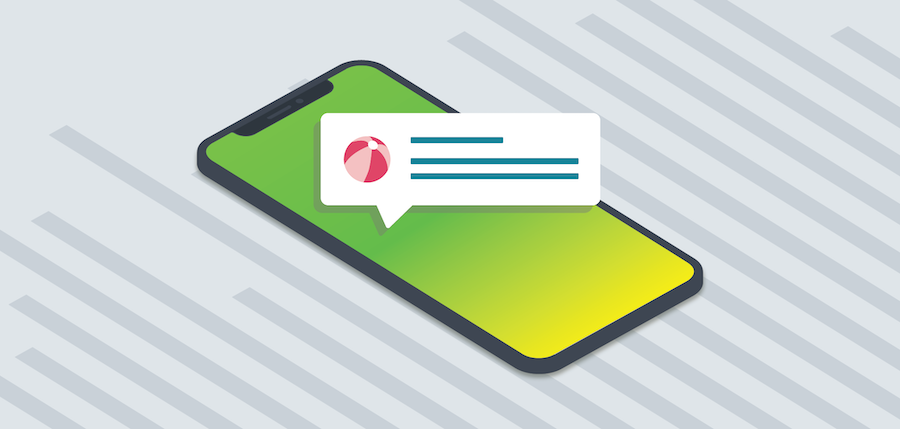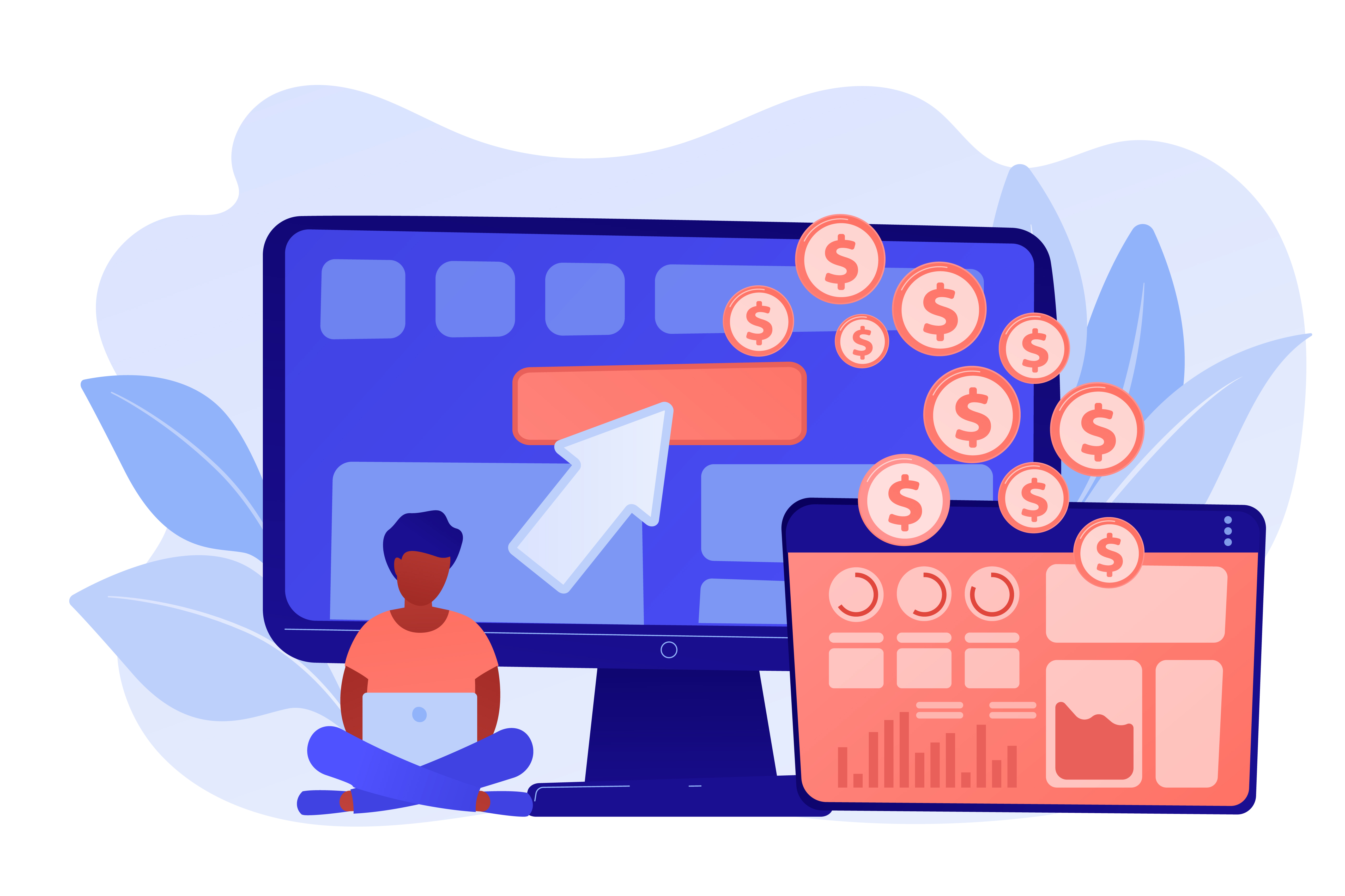It is a fast paced world out there. Both customers and marketers these days are rushing in their own ways. In all this, adding a single extra step in your conversion funnel can prove to be a deal-breaker and push a significant number leads out of it.
It doesn’t matter if you own a mobile app or a website for your business, you want all your users to convert into qualified leads. Consequently, you want your push notifications as a way to go.
However, only a few marketers are seen utilizing this valuable marketing channel to the fullest. It seems we don’t even realize how powerful push notification marketing can be for running a successful business.
In this article, we will go through a breakdown of effective push notification marketing, best push notifications practices, and the correct ways to segment prospects for better user engagement and greater conversion stats.
Let’s begin now.
Generic yet essential best push notification practices
Sometimes, we become lost finding cutting-edge practices so much that we tend to overlook some fundamental practices. There are only a few of them yet hardly followed by every marketer. So before banging your head into unique alternatives, ensure that you are already keeping on with the following three universal laws of effective push notifications.
1. Value
What’s in it for the recipients? Is it something that concerns them? When it comes to giving value to the push recipients, there are two levels of propositions. One, knowing if the message concerns the particular segment of the users? Two, does the message has the potential to generate demands?
There is only one way to abide by both the levels –avoid ambiguity and clarify what’s in it for the users and what they would miss if they decide to overlook. Check out the sample push alert below:

This is an alert from a business that sells dog food.
Does it concern people with pet dogs? – Yes!
Does it concern the people who don’t want to purchase dog food at the moment? – No
However, does it creates a demand from the people, who have not been giving dog food to their pets but are concerned about their pets’ health? –Indeed yes!
That’s what makes your notifications valuable. Include something that attracts not only the target audience but also creates a demand from the potentially relevant populace. Value is a vague term in itself. What’s valuable and effective push notifications for one might not be same for the others. The best way to find value in your messages is by knowing your target audience, their behaviors, and their potential interests. So start studying them, and you will know what to do next.
2. Visual appeal
People love information. It’s good that you are sending valuable messages, but what can you do if they are not even noticing your notifications?
You see, any average smartphone user’s notification panel is overloaded with at least 10-15 real-time push notifications from dozens of mobile apps and websites at a time. It’s not easy to stand out in the crowd, especially when your notifications look not better than the others in the list.
Visuals, pictures, graphics, images, photos, animations, and Gifs, call them anything, but they have an exceptional ability to draw attention. They make your stories powerful and brimming with emotional triggers.
One, visuals are easily noticeable and can depict the context quicker than that a mere line of text.
Two, they complement the textual lines and extend the horizon to add more elements in the message.
For example, have a look at this below sample of rich push notification:

Besides the regular Title, Body, and the CTA button, I can add two important visuals in this particular sample.
- I can utilize the Icon to give brand identity to my message with my brand’s logo in it.
- I can utilize a relevant Banner image to trigger attention and emotions visually.
- I can put some message or punch-line on the Banner Image to complement my message. It will allow me to tell more without using too many words in the Body.

I can use the clock icon to trigger FOMO, Sale-banner to stand-out, and text to provide details. There could be N number of other ways to become creative with these elements we get through the rich push notifications. What’s your take? Can think of any other idea?
3. Personalization
Personalization is probably the most misunderstood push notification best practice. Where marketers consider personalization as just addressing the user personally or writing a customized copy for relevant segments, personalization goes way beyond this.
The biggest aspect of effective push notifications personalization is addressing the aspects from a recipient’s device. Not every device that can receive a notification displays them similarly. Mobile phones, smartwatches, different web browsers, different computers, all of them have their native designs to display the push alerts and their content.
For example, Google Chrome supports rich web push notifications with images and CTA buttons, while Firefox can send only textual alerts.

So, if you want to personalize your real-time push notifications, which you should definitely do, then abide by the following best practices:
- Create different notification copies for different kind of devices.
- Address users with their names or at least pin-point a past behavior.
- Customize the images and CTA as per targeted devices.
- Experiment with different frequencies for different devices.
Push notifications best practices for growing opt-ins
Before you can send any notifications to your users, you must get them to opt-in first. However, it’s not easy to do so. Where Android users automatically opt-in when they install your mobile app, iOS users need to manually allow the notifications for individual apps.
Similarly, if you are sending web push notifications through web browsers, you must ask your visitors to allow your notifications through an opt-in box.

Don’t just jump on the users upfront
Wait for the right time to trigger the opt-in request. You can trigger an automatic opt-in box only once, so it’s crucial to wait for the right moment. Let them explore the app first, and trigger the opt-in right at some point where there is a clear need for push notifications.
For example, if you run a shopping app, you can trigger the opt-in after the user completes a purchase. There you can send an in-app message to tellling that you would keep the user posted about the shipping status through push.
You can leverage the in-app messages to also convince users to allow notifications manually if they have blocked the same on the first official prompt. You can link the message to the app’s notifications settings from where they can always allow the notifications.
Two key push notifications segments for excellent results
The more personalized a push notification is, the better is the open-rate and user retention. One such way for getting higher push engagement is segmentation. Though there are several ways to segment the users, the following two types of segments produce most of the positive user experiences:
Behavior-based segments
Segment your users based on their behavior. Look out for the ways users are interacting with the app or website, and offer valuable insights into the stuff that concerns them. In return, you would have a comprehension of your target audience, and how you can send relevant notifications to them.
One of the major benefits of behavior-based targeting is you can boost the app engagements. For example, one user behavior can be leaving items in the shopping cart and exiting the app without making a purchase. A personalized push message for this behavior can be the following:

Not just shopping cart abandonment, there are N numbers of user behaviors you can track and send automatically triggered notifications. For example, a video streaming app can recommend more videos to watch based on the watch history.
Preference-based segments
Behavior-based alerts are more likely to become annoying. These automatically triggered alerts track user behavior and immediately trigger mapped notifications. However, they can become insanely frequent and even irrelevant some times.
Let’s assume I am watching a video on Netflix, and I closed a video without watching it completely. Now, there could be possibly many reasons for this particular behavior. I may have not liked the video after watching it for some time, or I may have to run some important errand. Now if Netflix sends an alert to remind me to complete watching the video, it can be annoying to me if I did not like the video.
This is where preference-based notifications come handy. You can give your users as many choices to select what they want to receive and what not. For example, Amazon gives dozens of options to the users to update their preferences.

What’s you take on push marketing?
While these ideas are good for starting with your push campaigns, it’s important that you also test your notifications regularly. Conduct A/B testing from time to time and hone your strategies accordingly. Experiment with different types of notifications and try to keep them occasional. Know their time-zones and try not to wake them up in the middle of the night at least.
Once you have your campaign ready, don’t forget to keep it relevant, helpful, and interesting to your users. Push notifications are a privilege, but they can even be abused very easily. What do you think?

Quora | Twitter | LinkedIn
Marry Ann is a branding consultant for PushMaze, a service that lets you send trackable push notifications for users. She mainly passionate about building brands in all aspect of online marketing.


